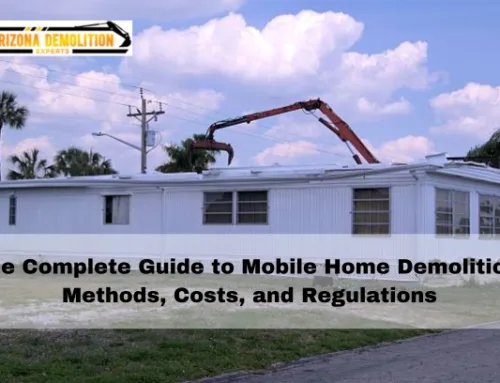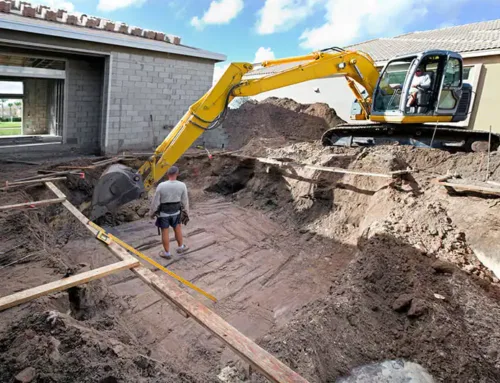Introduction
In an era where environmental concerns are at the forefront of global discussions, industries are undergoing a transformative shift toward sustainability. Demolition, a process historically associated with destruction and waste, is no exception. Demolition contractors are stepping up to the challenge by adopting sustainable practices that mitigate environmental impact, minimize waste, and contribute to a greener future. In this blog, we’ll explore the evolving landscape of demolition through the lens of environmental responsibility, shedding light on the innovative sustainable practices employed by demolition contractors.
The Environmental Impact of Traditional Demolition
Traditional demolition methods have long been criticized for their adverse environmental effects. The indiscriminate disposal of construction debris, emission of harmful pollutants, and disruption of local ecosystems are some of the significant concerns associated with conventional demolition practices. These impacts not only degrade the environment but also pose risks to human health and the surrounding communities.
Sustainable Demolition Practices: A Paradigm Shift
1. **Deconstruction over Demolition:** Demolition contractors are embracing the concept of deconstruction, which involves carefully dismantling a structure to salvage reusable materials. This approach reduces waste by diverting materials such as wood, metal, and concrete from landfills. Salvaged materials can be repurposed in future construction projects, significantly lowering the demand for new resources.
2. **Selective Demolition:** Rather than demolishing an entire structure, selective demolition focuses on removing specific components while leaving the rest of the building intact. This practice minimizes waste generation and allows for the preservation of valuable architectural elements.
3. **Recycling and Waste Management:** Demolition contractors are partnering with recycling facilities to ensure that materials like concrete, metal, and glass are properly recycled. This reduces the need for virgin materials and decreases the environmental footprint associated with resource extraction.
4. **Emission Control:** To mitigate air and noise pollution, demolition contractors are employing advanced equipment and technologies that capture and filter dust and pollutants generated during the demolition process. This not only protects the health of workers but also safeguards the surrounding environment.
5. **Energy Efficiency:** Demolition contractors are utilizing energy-efficient equipment and machinery, which not only reduces energy consumption during the demolition process but also lowers greenhouse gas emissions.
6. **Hazardous Material Management:** Proper identification and safe removal of hazardous materials such as asbestos and lead-based paint are critical aspects of sustainable demolition. These materials are disposed of in accordance with strict regulations to prevent contamination of soil and water sources.
7. **Community Engagement:** Sustainable demolition goes beyond technical practices. Demolition contractors are engaging with local communities to address concerns, provide information, and ensure transparency throughout the process. This fosters positive relationships and builds trust between contractors and communities.
Case Studies: Pioneering Sustainable Demolition
1. **Reusing Materials in the Chrysler Building Renovation:** During the renovation of the iconic Chrysler Building, demolition contractors focused on salvaging and reusing materials wherever possible. This included preserving original Art Deco features and repurposing materials for the building’s interior.
2. **Zero-Waste Goal in the Green Square Library Project:** In Sydney, Australia, the Green Square Library project aimed for a zero-waste goal during demolition and construction. Demolition contractors meticulously sorted and recycled materials, diverting an impressive 98% of waste from landfills.
The Road Ahead: Advancing Sustainability in Demolition
The integration of sustainability into the demolition industry is not just a passing trend; it’s a vital step toward a more environmentally conscious future. As technology continues to advance, demolition contractors are exploring innovative methods such as robotic demolition, which can target specific areas with precision, minimizing overall waste.
Moreover, collaborations between demolition contractors, architects, engineers, and policymakers are essential for creating a comprehensive framework that promotes sustainable demolition practices. This collaboration can lead to the development of stricter regulations, incentives for green practices, and the establishment of industry standards that prioritize environmental responsibility.
Conclusion
Environmental responsibility is reshaping the demolition industry, turning a once environmentally damaging process into a force for positive change. Demolition contractors are embracing sustainable practices that not only reduce waste and emissions but also demonstrate their commitment to preserving our planet for future generations. As we witness the evolution of demolition, let’s celebrate the ingenuity of these contractors who are proving that progress and environmental stewardship can go hand in hand.




